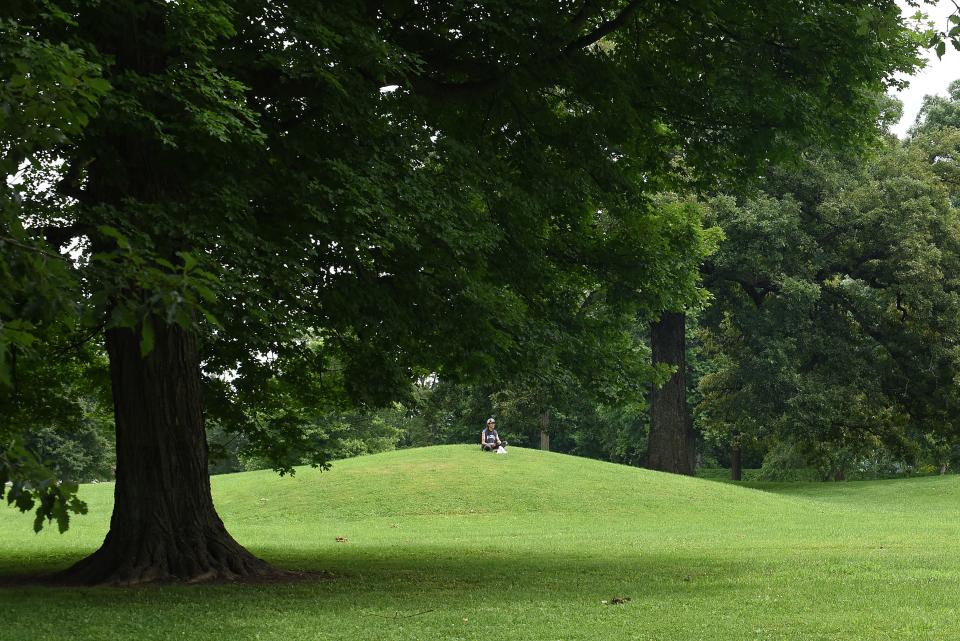Lepper: You don't need to be in the air to appreciate the Newark Earthworks
- Oops!Something went wrong.Please try again later.
Ohio’s ancient American Indian cultures built earthworks on a truly monumental scale. Newark’s Great Circle and Octagon Earthworks, along with the other Hopewell earthworks that are being considered for inscription on the UNESCO World Heritage List, are so huge that it can be hard to appreciate the elegance and precision of their forms when you’re standing next to them. Some have suggested that, in order to fully appreciate these gigantic circles, squares, and octagons, you have to view them from the air. I strongly disagree, but even if there is a grain of truth in the claim, it’s profoundly misleading.

Viewing the earthworks from above can give you a different perspective, but there is no reason why you cannot fully appreciate their forms and grandeur simply by taking the time to walk through them. And this is, of course, how they were experienced by the Indigenous people who came to these enormous earthen cathedrals two thousand years ago.
There is a sinister side to the claim that the earthworks can only be appreciated from the air. It’s often used by crackpots to support the absurd notion that the earthworks must have been built by ancient aliens who would look down on them from their flying saucers. Such claims aren’t just silly, they cause real harm by implying that ancient American Indians were not smart or ingenious enough to have built these wonders of the world.
I think the main reason why some people have a hard time appreciating the enormous Hopewell earthworks from the ground is that the earthworks are not what we expect ancient monuments to look like. Instead of towering stone buildings, they are sprawling earthen enclosures that can seem to extend from horizon to horizon. Moreover, as works of earth they have a deceptive simplicity. Even people who should know better have said “they’re just piles of dirt.” Well, the earthworks are piles of dirt, in the same way that the Parthenon is a pile of rocks.

In some ways, the Hopewell earthworks are more readily understood as works of art rather than architecture. The American abstract expressionist painter Barnett Newman wrote, “walking inside the Fort Ancient and Newark earthworks, … one is confounded by a multiplicity of sensations: that here are the greatest works of art on the American continent, … perhaps the greatest art monuments in the world.”
Landscape artist Michael Heizer recently completed a monumental sculpture in the high desert of Nevada that, with its sprawling earthworks, plazas, and avenues, looks like it could have been inspired, at least partly, by the Hopewell earthworks. Some might suppose that it can only be appreciated from the air, but they’d be just as wrong as those who claim the same for Hopewell earthworks.
New York Times reporter Michael Kimmelman writes that Heizer’s Cyclopean “City” is “meant to be trekked and explored on foot, slowly, at eye level, where the site swallows you up.” I am sure the Hopewell architects of Newark and Fort Ancient had much the same idea for their designs.
This may be why some people are more comfortable with viewing the earthworks from the air. The rarified view makes it easier to categorize what you’re seeing. The Hopewell earthworks become simply circular or octagonal enclosures – mere architecture, instead of confounding, labyrinthine sculptures that can swallow you up.

Brad Lepper is the Senior Archaeologist for Ohio History Connection’s World Heritage Program
This article originally appeared on Newark Advocate: Lepper You don't need to be in the air to appreciate Newark Earthworks

